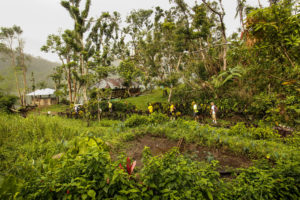Another Famous Common Person I Have Known, Benny
In Spring, 1974 I spent a few days at Clark AFB in the Philippines. Part of the rate for my hotel room in Angeles City included a Jeepney and a driver. His name was Benny and he took me all over the place, such as the first Japanese kamikaze airfield nearby. I told Benny I wanted to go to the town where they made rattan furniture, and he asked if would be OK to slightly detour “a few miles” and go to his village so he could pray in his home church during Lent, (a requirement for Filipino Catholics, so Benny said.).
We left the main highway and onto a dusty dirt road, heading due west, into the interior. There were nothing but forest and open fields of cane, which we’d cross a few hundred yards at a time, then back into the forest until we came back into the sunlight and another open field of cane. I can’t say it wasn’t just a “few miles” but it seemed like a hundred, and along the side of the road were workmen in shorts pants, straw hats and big machetes.
It dawned on me that the only thing that did not fit into this landscape was me, with a $600 camera around my neck, a light sport coat that just shouted “t-o-u-r-i-s-t”, and $700 in cash in my wallet. I asked Benny how much further, or maybe we could go back to the main road, whichever was closer, but it sure didn’t look too friendly out here, all those bolo knives, and not a smile or “Hi, howya doing?” among them. It came crashing into my memory a warning an old aviator with several tours in Asia gave me about the Philippines, “The girls are all beautiful and pure as driven snow so will never steal your wallet while you’re sleeping, but you can never, never, trust a Filipino man.”
Oh, hell!, or Doh!, as Homer Simpson would say. So for the next hour (probably not more than 10 miles) I never said a word, just watching the parade of men with bolos gazing at me with mean looks in their eyes, and straining to see if any were hiding behind trees in the dark of the jungle. Finally, we came to a small village with only two buildings of any size. One was a church, the other, I soon found out, was the school.

Benny drove directly to the church, a small building with no bell tower, and a large cross on the front wall, and motioned for me to stay seated, while he went inside. He was back in less than 5 minutes, fired up the Jeep and we drove a hundred yards or so to the school. I couldn’t tell you how many students schooled there, or the grades, but Benny ran up to a man, then brought him down to meet me. Inviting me in, he and Benny talked privately for a couple of moments, then Benny said he would go visit his sister and be back in a few minutes. Then we could go to the furniture factory, just ten minutes away.
He was the school master, mid-fifties, I can’t recall his name, but he spoke impeccable English and was very pro-American. He told me he had worked with the Americans when MacArthur was there and with the Philippine resistance against the Japanese. He was the most important man in town. I told him I lived near Tokyo, and out of respect never said that the Japanese were nicer now, after he said it was good “that America still occupied Japan”.
Standing up to leave, and shaking hands, my new friend said, “Benny’s a good boy. I taught him here. He told me that you were afraid driving through the cane fields, fearing that he had lured you into a trap and that the men with knives would kill you and take your money and your camera.”
I felt small and ashamed.
He went on, “Benny would never do that…” then paused,
“….during Lent”.
He smiled, we shook and I went back onto the highway and the rattan factory.

Great story. During Lent…. Your timing could not have been better.
[…] Vassar Bushmills […]